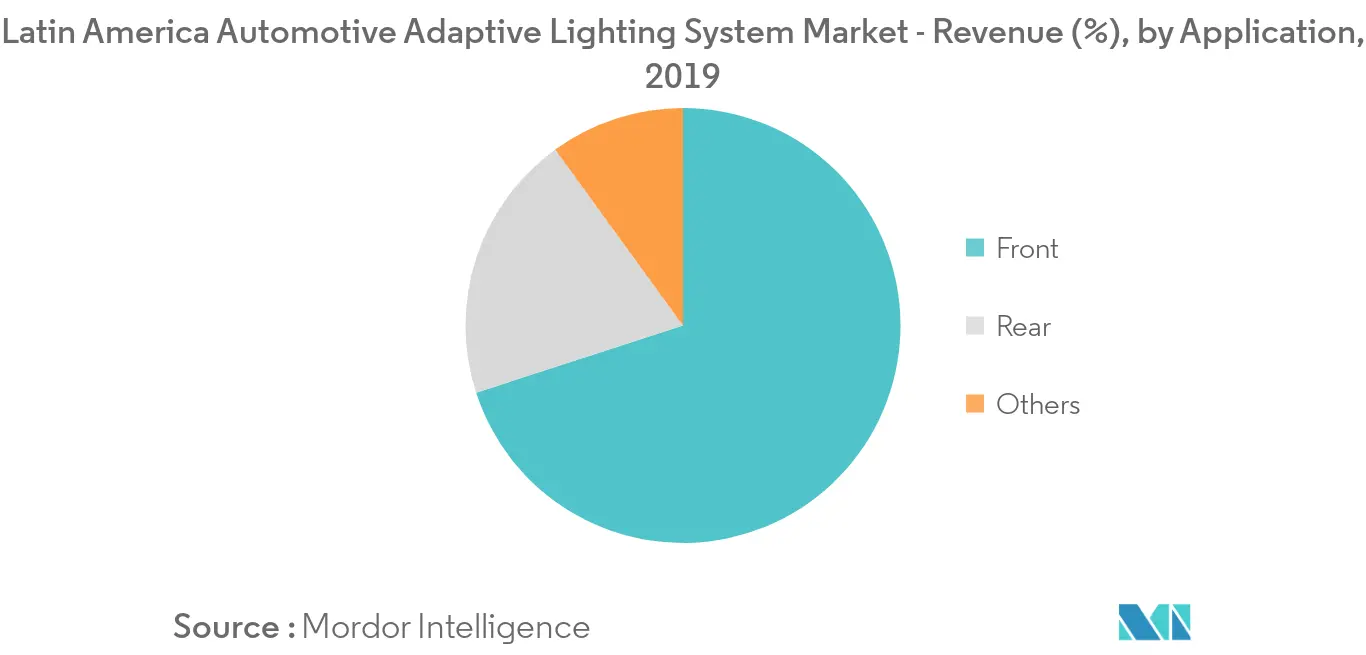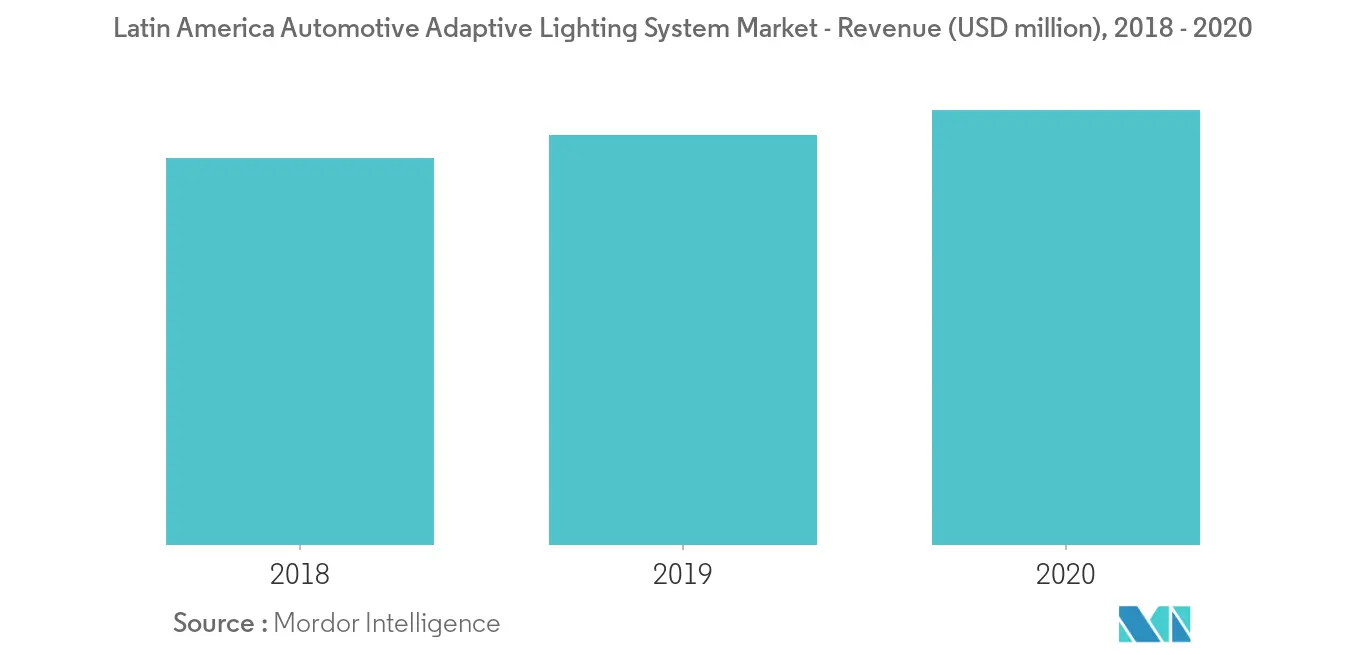Market Trends of Latin America Automotive Adaptive Lighting System Industry
This section covers the major market trends shaping the Latin America Automotive Adaptive Lighting System Market according to our research experts:
Front lightening will lead the market.
Adaptive front lighting systems can adjust the headlights of the vehicle so that the driver has adequate night vision in addition to the safety of other road users. Most of the, in old cars headlights generally have a mechanical connection whereas in modern cars ALS uses stepper motors for controlling the headlight angle, which works according to the information provided by sensors In addition to that ASLS adjusts the beams while cornering, to provide better illumination towards the direction of travel. LEDs are employed in an adaptive lightening system for avoiding any direct glare to the vehicles coming from the opposite direction.
ALS are previously only been part of luxury or high-end vehicles, but now many entry-level vehicle models have the feature of automatically switching between the beams when they detect oncoming traffic.
Leading automotive OEMs and lighting system manufacturers are developing various adaptive front lights for future vehicles.
HELLA is developing a new automotive headlamp technology Digital Light SSL, which will go into production by 2022. With over 30,000 light points, it provides a wide variety of new safety- and comfort-relevant function, such as optical lane assistants, and projected protection zones for pedestrians and cyclists.

Incorporation of Sensors/ Camerais likely drive the Market
Several car manufacturers and light manufacturers are having their own mechanism of adaptive lighting, but the most important role in this system is of the cameras and sensors as it provides the information to the system, and then accordingly light changes its intensity and direction. For instance,
Audi adaptive xenon headlights have the gas discharge lamps. It provides much brighter light as halogen incandescent lamps also their energy consumption is 20 percent less. Audi offers these headlights in every model either as standard or as an option. This module is electromechanically rotated for the adaptive light.
Similarly, in Hella adaptive headlight systems, the company's VarioX® module is combined with a swiveling module. In the combination in between the light source and the lens, there is a cylinder that can be rotated in its longitudinal axis. The outer surface of the cylinder generates different light distributions on the road and the stepper motor turns the cylinder to the required position within milliseconds.
Whereas, BMW Adaptive Headlights comes with optional glare-free High Beam Assist which controls the main beam of the headlights for proper illumination of the road.In this system an image sensor which is inside the front mirror looks after the lighting conditions and the traffic ahead up to a distance of 400 meters.


